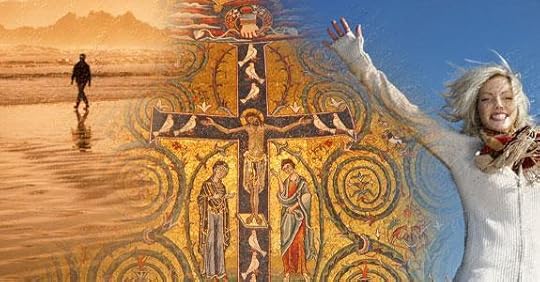Carl E. Olson's Blog, page 224
April 26, 2012
Celebrating the Month of Mary with 20% off

Celebrating the Month of Mary with 20% off
Offer ends Tuesday May 1st 2012 at 12:00 midnight EST. These prices are available online only through Ignatius.com
In celebration of Our Blessed Mother during the month of May, Ignatius Press is offering 20% off on a great selection of Books, Films and Music CDs. With a wide selection of titles, any one of these would be the perfect gift to give your Mother on Mother's Day!
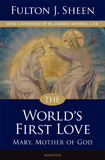 The World's First Love (2nd edition)
The World's First Love (2nd edition)
Mary, Mother of God
Archbishop Fulton J. Sheen
With his characteristic eloquence and brilliance, Fulton J. Sheen presents a moving portrayal of the Blessed Virgin Mary that combines deep spirituality with history, philosophy and theology. All the major aspects and events of Mary's life are lovingly portrayed in this word portrait that is a never failing source of information, consolation and inspiration. Sheen also gives profound insights into all the Marian beliefs ranging from the Immaculate Conception to the Assumption to the miracle of Our Lady of Fatima.
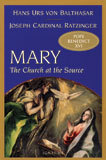 Mary
Mary
The Church at the Source
Joseph Cardinal Ratzinger, Hans Urs von Balthasar
At once profound and yet readily accessible, Mary: The Church at the Source offers a theologically balanced and biblically grounded presentation of traditional and contemporary thought on Marian doctrine and spirituality.
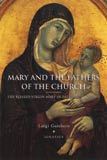 Mary and the Fathers of the Church
Mary and the Fathers of the Church
The Blessed Virgin Mary in Patristic Thought
Luigi Gambero
Father Luigi Gambero, internationally-known expert on early Christianity, presents a comprehensive survey of the development of Marian doctrine and devotion during the first eight centuries. Focusing on the lives and works of over thirty of the most famous Church Fathers and early Christian writers, Fr. Gambero has produced a clear and readable summary of the richness of the patristic age's theological and devotional approach to the Mother of God.
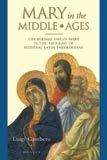 Mary in the Middle Ages
Mary in the Middle Ages
The Blessed Virgin Mary in the Thought of Medieval Latin Theologians
Luigi Gambero
In his book Mary and the Fathers of the Church, Fr. Luigi Gambero presented a comprehensive survey of Marian doctrine and devotion during the first eight Christian centuries. Mary in the Middle Ages continues this journey up to the end of the fifteenth century, surveying the growth of Marian doctrine and devotion during one of the most important eras of Christian history: the Middle Ages.
Maria
Pope Benedict XVI on the Mother of God
Pope Benedict XVI
This glorious volume is a lavishly illustrated coffee-table book with dozens of inspirational and famous color paintings, sculptures and artwork of the Blessed Virgin Mary from all over the world. The beautiful pictures are accompanied by the profound writings and homilies of Pope Benedict XVI on the person of Mary, and her unique role in human history and in the plan of God for salvation history.
Mary: God's Yes to Man
Encyclical Letter: Redemptoris Mater
Pope John Paul II's only encyclical on our Blessed Mother, with introduction by the Cardinal Prefect of the congregation for the Doctrine of the Faith, Cardinal Joseph Ratzinger, and commentary by one of the world's leading Catholic theologians, Hans Urs von Balthasar. The Church's supreme magisterium and representative of the Church's most penetrating theological reflection combine to provide for all the faithful a rich and concise compendium of the Mother of the Redeemer.
The Seven Joys of Mary
Romanus Cessario, O.P.
A beautiful book of meditations illustrated with more than 70 full-color reproductions of the masterpiece The Seven Joys of the Virgin by Hans Memling (c. 1480). Discover the Seven Joys of the Blessed Virgin Mary, and contemplate with her how the mysteries of Christ's life answer the deepest questions of our lives.
Mary for Today
Hans Urs von Balthasar
The acclaimed theologian von Balthasar gathers from the Sacred Scriptures and the richest tradition of the Church the elements of a portrait which shows Mary's place and her relevance for today.
Mary in the Redemption
Adrienne von Speyr
In this profound work on Our Lady, Von Speyr explores Mary's participation with Christ in our redemption, and the unique relationship that each of us should have with our spiritual mother.
Mary Most Holy
Coloring Book
Katherine Sotnik
This book in the series of Sotnik's popular and lovely coloring books, uses the inspiring Litany of the Blessed Virgin Mary for the text. She presents numerous, beautifully drawn classic images of Our Lady under her many titles, including Mother of Good Counsel, Mother of Divine Grace, Queen of Martyrs, Health of the Sick, Mystical Rose and many more.
My First Pictures of Mary
Maite Roche
This charming board book with rounded corners introduces toddlers to their Blessed Mother Mary with sweet, four-color pictures.
My First Prayers With Mary
Maite Roche
Very young children are introduced to our Blessed Mother with tender petitions for her care and protection. Sweet four-color illustrations accompany the text that begins with the Hail Mary, but also includes original prayers that draw the child closer to his Mother in Heaven and, through her, to Jesus.
DVDs
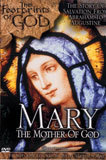 Footprints of God: Mary
Footprints of God: Mary
The Mother of God
This second film in the the Footprints of God series follows Mary on her extraordinary journey on location in Turkey, Israel and Greece with popular Catholic author and speaker Stephen Ray as guide. Down-to-earth teaching on subjects like Mary's Immaculate Conception, Assumption into Heaven, and her role of intercessor, and more are offered in an energized, high-impact style that combines the best elements of a travel documentary, biography, Bible study, apologetics course, and church history review.
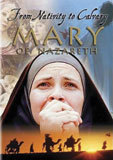 Mary of Nazareth
Mary of Nazareth
From acclaimed French film director Jean Delannoy comes this beautiful drama about Our Lady that traces her life as the blessed mother of Jesus, the wife of the humble carpenter, Joseph, and as an inspiring symbol of purity and faith.
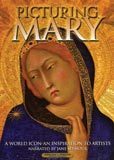 Picturing Mary
Picturing Mary
Narrated by Jane Seymour with dramatic readings by James Keach, this moving program takes viewers on an artistic journey spanning almost 2,000 years and crossing four continents. It visits museums, chapels & cathedrals to view rare and sacred masterpieces by such artists as Michelangelo, Rembrandt, Caravaggio and Duccio in their original locations. These treasured artworks reveal the artist's expression of their personal devotion, and are an enduring testament to Mary as the sublime embodiment of the virtues of the human race.
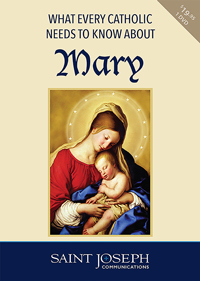 What Every Catholic Needs to Know About Mary
What Every Catholic Needs to Know About Mary
Now, you'll be empowered with the truth about such important Marian topics as her Divine Maternity, Perpetual Virginity, Immaculate Conception, and Bodily Assumption into Heaven. Plus, you will learn the crucial role that the Church's Traditional Biblical interpretation regarding the Blessed Virgin plays in understanding her role in the Church today.
MUSIC
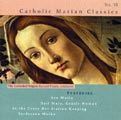 Catholic Marian Classics
Catholic Marian Classics
Richard Proulx and his Cathedral Singers once again bring their incredible talents to this sequel to Catholic Latin Classics, presenting lovely sacred music and moving renditions of 21 classic Marian hymns that are a wonderful tribute to Our Lady. Hymns include four Ave Marias, Salve Regina, Sing of Mary, Regina Caeli, Hail Holy Queen and 13 more.
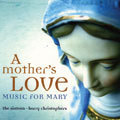 A Mother's Love
A Mother's Love
The Sixteen with Harry Christophers
Britain's best-selling choir, The Sixteen, presents a new album of music inspired by classic hymns to the Virgin Mary. Harry Christophers, the most prolific choral conductor of modern times, directs the choir performing a glorious album of Marian songs ranging from medieval composers like Palestrina, and Lassus through Bruckner and Liszt, to modern times, including a world premiere work by Margaret Rizza, Ave Generosa.
Catholic World Report and Homiletic & Pastoral Review
On Fifteen Years a Catholic
by Carl E. Olson
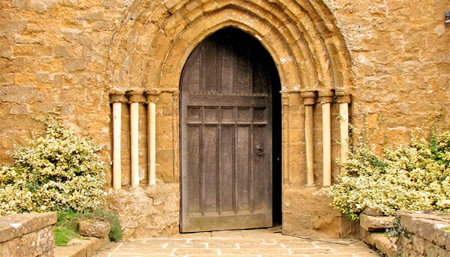
Two issues then and two surprises later
“How can you join a church that tells you how to think?”
The question, uttered with equal parts puzzlement and anger, surprised me. In hindsight, it should have been about as surprising as an afternoon drizzle here in Eugene, Oregon, in early spring. The question—almost an accusation, really—was made one early spring day over fifteen years ago. It was said in the middle of an intense discussion about the reasons why my wife and I had, both graduates of Evangelical Bible colleges, had decided to become Catholic.
The HHS Mandate: Is it a Religious Liberty Issue?
by Fr. Dylan Schrader
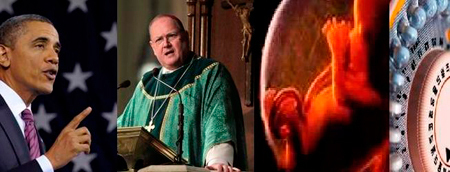
Some Catholics (and others) have couched their objection to the recent HHS mandate in terms of religious liberty. Their focus has been on the unreasonably narrow definition of what constitutes a religious organization, and on the lack of a proper exemption for religious employers who do not wish to provide coverage for contraceptives, sterilizations, and abortions. Such a focus is good and correct—the HHS mandate does blatantly infringe on the free exercise of religion. To focus only on this aspect of the mandate, however, is to miss an even more foundational point, namely, that contraception, sterilization, and abortion are really evil.
For Additional Sale Items Click HERE!
Items are not sold on approval.
Periodically we make available -- only to you, our valued repeat customers -- special offers which are not available to the general public. We offer these discounted prices as our gift to those who help us by using Ignatius.com. Please do not ask for retroactive price consideration. We cannot accommodate those requests. Many thanks.
April 25, 2012
Single by Vocation
Single by Vocation | Jim Graves | Catholic World Report
Those who remain single are able serve their families, communities, and the Church in unique and varied ways.
The unmarried man gives his mind to the Lord’s affairs and how he can please the Lord; but the man who is married gives his mind to the affairs of this world and to how he can please his wife, and he is divided in mind. So, too, the unmarried woman, and the virgin, gives her mind to the Lord’s affairs and to being holy in body and spirit; but the married woman gives her mind to the affairs of this world and to how she can please her husband.” 1 Corinthians 7: 32-34
In a November 1, 2010 letter, Archbishop Robert Carlson of St. Louis offered encouragement to lay men and women of his archdiocese who choose to remain single in order to make themselves available for prayer and apostolic work. In the letter he said, “Single men and women who have given themselves wholeheartedly to Christ…bind themselves to the service of others, and they participate directly in the Church’s mission and share themselves intimately with those who walk with them on the journey to Christ’s kingdom.”
Archbishop Carlson continued, “They discern God’s will for themselves through prayer, spiritual reading, and retreats. They commit to their families—parents, siblings, and extended family members. They partner with friends, co-workers, fellow parishioners, neighbors, and all whom they encounter in seeking to make our world a better place.”
Not "leftover"
For 60-year-old Sara (who declined to give her last name), a St. Louis resident who works in the health care industry, being a dedicated single gives her an opportunity “to enrich the Church and serve others in need.”
The HHS Mandate: Is it a Religious Liberty Issue?
By Fr. Dylan Schrader, for Homiletic & Pastoral Review:
Some Catholics (and others) have couched their objection to the recent HHS mandate in terms of religious liberty. Their focus has been on the unreasonably narrow definition of what constitutes a religious organization, and on the lack of a proper exemption for religious employers who do not wish to provide coverage for contraceptives, sterilizations, and abortions. Such a focus is good and correct—the HHS mandate does blatantly infringe on the free exercise of religion. To focus only on this aspect of the mandate, however, is to miss an even more foundational point, namely, that contraception, sterilization, and abortion are really evil.
We are speaking, then, of two distinct but related problems with the HHS mandate. First, it seeks to increase the frequency of contraceptive acts, sterilizations, and abortions. Second, it seeks to coerce most employers to cooperate materially in providing for, and facilitating, such acts even if these employers have a conscientious or religious objection. While we have objected, and must continue to object strongly, to the second point (the infringement on freedom of conscience and religion), we must also vocally oppose the first point. Indeed, the second presupposes the first. The more fundamental problem with the HHS mandate, therefore, is the immorality of the acts themselves in which religious organizations are being “required” to cooperate.
When it comes to any policy that directly seeks to facilitate contraceptive acts and abortions, we cannot limit ourselves to an approach that would imply that such a policy is acceptable as long as it isn’t forced on Catholics (or other religious employers). Contraception, sterilization, and abortion are always wrong for everybody, regardless of their religious beliefs. We should be seeking to eradicate these evils altogether, not merely seeking an exemption from cooperating in them ourselves.
If we approach the HHS mandate only with a concern for the protection of conscience rights, and do not accompany this approach with a clear reiteration and explanation of the immorality of contraception, sterilization, and abortion, then the rest of the world could easily understand us to be embracing not only a de facto, but even a de iure, pluralism with regard to these moral issues. People might take us to be saying, in effect: “We’re not trying to limit access to contraception and abortion; we just don’t want Catholic institutions to be forced to provide it.” This would be misleading, for the Catholic position is not that Catholics should not contracept or abort; it is that no one should contracept or abort.
April 24, 2012
Catholic Music: A non-definitive but exceptional, eclectic list
The April 29th edition of Our Sunday Visitor newspaper has a feature article, "Make a joyful noise", about Catholic music and musicians, which I co-authored with long-time, tuneful friend, Gregory Oatis. We had a certain numbers of words and a limited budget (we were only able to visit South America and Europe; no Australia. Just kidding.) The final list includes 21 (or so) artists, bands, and composers.
Frankly, we stressed out a bit about our choices, knowing it was inevitable that readers would say, "How in the world could you leave This Great Catholic Band off your pathetic, narrowminded, tone deaf, biased list!?" So we established some rigorous criteria for making our selections. I forget what was involved in said criteria, but I know it was impartial and intelligent. Mainly, we wanted a wide range of artists. My one disappointment was not including a jazz artist; I could have gone with Dave Brubeck, but decided to let it go and give someone else some ink. Another criteria, which came from OSV, was to focus on living artists. Otherwise Haydn would have made a big splash.
Of this I'm fairly certain: most readers will learn about some musicians and music they've never heard of before. And many readers will, of course, take umbrage with this or that pick, or especially with this or that non-pick. Hey, I get it. My feelings aren't hurt, and I hope yours aren't, either. Here's your chance: who would you have added? Why?
The real shock...
.. in the CDF vs. LCWR saga is not, George Weigel notes, the faux shock of the LCWR leadership, but
that the Vatican had finally acted, decisively, after three decades of half-hearted (and failed) attempts to achieve some sort of serious conversation with the LCWR about its obvious and multiple breaches of the boundaries of orthodoxy.
Weigel makes several observations about the general lack of orthodoxy and orthopraxy among LCWR ladies:
Yes, many sisters continue to do many good works. On the other hand, almost none of the sisters in LCWR congregations wear religious habits; most have long since abandoned convent life for apartments and other domestic arrangements; their spiritual life is more likely to be influenced by the Enneagram and Deepak Chopra than by Teresa of Avila and Edith Stein; their notions of orthodoxy are, to put it gently, innovative; and their relationship to Church authority is best described as one of barely concealed contempt.
Some communities of LWCR sisters no longer participate regularly in the Eucharist, because they cannot abide the “patriarchy” of a male priest-celebrant presiding at Mass. Thus faux Eucharists celebrated by a circle of women are not unknown in these communities. Even those LCWR-affiliated communities that hold, tenuously, to the normal sacramental life of the Church regularly bend the liturgical norms to the breaking point in order to radically minimize the role of the priest-celebrant; at one such Mass I attended years ago, the priest did virtually nothing except pronounce the words of consecration.
He also points out something most knowledgeable Catholics have known for a while but is usually ignored in the general media account: the LCWR congregations are dying. Literally. The fact is, few women are interested in joining communities that are either self-centered, focused on rejecting Church teaching, or a combination of the two (after all, if the goal is self-fulfillment or men-bashing, there are plenty of exciting secular alternatives):
So the LCWR orders are becoming greyer and greyer, to the point where their demise is, from a demographic point of view, merely a matter of time: perhaps a few decades down the road, absent truly radical renewal. (Meanwhile, the congregations of religious women that have retained the habit, a regular prayer life, and a commitment to Catholic orthodoxy are growing.)
Drawing upon the work of Ann Carey, whose book, Sisters in Crisis (1997), was squarely based in research of LCWR documents and sources, Weigel notes this sad fact:
Moreover, Carey discovered that the beginnings of this “reform” were largely designed by men: priest-consultants brought in to advise the LCWR’s predecessor organization, address its annual conferences, and help redesign sister-formation programs. Ironically enough, it was men, not liberated women, who charted the path to the radical feminism that eventually led too many LCWR sisters and the LCWR itself into a mental universe unmoored from even the minimal requisites of Christian orthodoxy.
Meanwhile, Fr. Z. has a listing of some of the key "Who's Who" in LCWR history.
New: "The Voice of the Church at Prayer: Reflections on Liturgy and Language"
Now available from Ignatius Press:
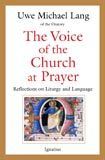 The Voice of the Church at Prayer: Reflections on Liturgy and Language
The Voice of the Church at Prayer: Reflections on Liturgy and Language
by Fr. Uwe Michael Lang of the Oratory
Pope Benedict XVI has made the liturgy a central theme of his pontificate, and he has paid special attention to the vitally important role of language in prayer. This historical and theological study of the changing role of Latin in the Roman Catholic Church sheds light on some of the Holy Father's concerns and some of his recent decisions about the liturgy.
The Fathers of the Second Vatican Council allowed for extended use of the vernacular at Mass, but they maintained that Latin deserved pride of place in the Roman Rite. The outcome, however, was that modern translations of the prayers of the Mass replaced the Latin prayers.
What was the reason for the Council's decision and why is there now a desire for greater use of Latin in Catholic worship? Why have some post-conciliar English translations of the prayers of the Mass been replaced?
Fr. Lang answers these questions by first analyzing the nature of sacred language. He then traces the beginnings of Christian prayer to the Scriptures and the Greek spoken at the time of the apostles. Next he recounts the slow and gradual development of Latin into the sacred language of the Western Church and its continuing use throughout the Middle Ages. Finally, he addresses the rise of modern languages and the ongoing question of whether the participation of the laity at Mass is either helped or hindered by the use of Latin.
Uwe Michael Lang, a native of Germany, is a priest of the Congregation of the Oratory of St Philip Neri in London. At present, he is a staff member of the Congregation for Divine Worship and the Discipline of the Sacraments and teaches at the Pontifical Institute for Christian Archeology and at the Master's program in "Architecture, Sacred Art and Liturgy" at the UniversitÀ Europea di Roma. In September 2008, he was appointed a Consultor to the Office for the Liturgical Celebrations of the Supreme Pontiff. His book Turning Towards the Lord (2nd edition, Ignatius, 2009), with a preface by then-Cardinal Joseph Ratzinger, has been published in several languages. Most recently, he has edited and contributed to the volume The Genius of the Roman Rite: Historical, Theological and Pastoral Perspectives on Catholic Liturgy (Hillenbrand Books, 2010).
"The place of language in the liturgy is a much discussed topic today, both in scholarship and in pastoral practice. A welcome contribution to this debate, this important book presents the key issues within a wide historical and theological perspective. By doing so, Fr Lang is able to explain the reasons that motivated the current revision of vernacular translations produced in the immediate aftermath of the Second Vatican Council as well as the factors that drive the broad movement towards an more extended use of Latin in the Catholic liturgy."
- Archbishop J. Augustine Di Noia, OP, Secretary of the Congregation for Divine Worship and the Discipline of the Sacraments
"We Catholics who have long bemoaned the banality of modern translations of Scripture and of the liturgy have heard, by way of justification, that Jesus spoke and prayed in the same language one would use to buy wine and grain, or chat with a neighbor over the wall; and that Saint Jerome in his Vulgate translation, and those who composed the earliest Christian prayers and hymns, did much the same. We have suspected it was not so, and Michael Lang has now vindicated us. With admirable scholarship and sensitivity to the wide range of registers, including the sacred, that any vernacular language will possess, Lang shows us how the scriptures established for Christians a language of their own. This is a brilliant work, careful in its argumentation and overwhelming in the wealth of evidence brought forth. Would that we had had it forty years ago!"
- Anthony Esolen, Professor of English at Providence College
If Sigmund Freud Met C.S. Lewis
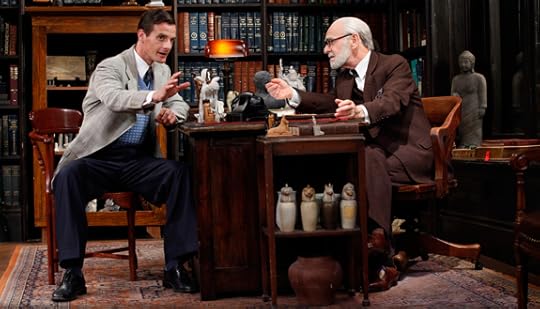
If Sigmund Freud Met C.S. Lewis | Thomas S. Hibbs | Catholic World Report
A new play depicts an imagined discussion between the two influential 20th-century thinkers.
Toward the end of the play Freud’s Last Session, a fictional conversation about the meaning of human life between Sigmund Freud and C.S. Lewis concludes, “How mad, to think we could untangle the world’s greatest mystery in one hour.” Freud responds, “The only thing more mad is to not think of it at all.” The combined sense of the limits to human knowledge and the unavoidability of the big questions is one of the many impressive features of this dramatic production, the remote origins of which are in a popular class of Dr. Armand Nicholi, professor of psychiatry in the Harvard Medical School. Nicholi penned a book, The Question of God: C.S. Lewis and Sigmund Freud Debate God, Love, Sex, and the Meaning of Life, which the playwright Mark St. Germain turned into an off-Broadway play, now in its second year in New York and just beginning a run in Chicago.
I had a chance recently to see the successful New York production, directed by Tyler Marchant and starring George Morfogen as Freud and Jim Stanek as Lewis. The play is not perfect; some of the dialogue is wooden, the result of the attempt to squeeze elements from the major works of the two authors into their conversation. Nicholi does a better job of this in his book, largely because he is free from the dialogue form. But the theatrical revival of the dialogue is what stands out in this production. In this case, the theater is an arena for the contest of ideas. There is a healthy reminder that philosophy itself has taken on various dramatic and literary forms; indeed, philosophy as a theater of debate hearkens back to the very founding of philosophy in the Platonic dialogue. Something of that original sense of philosophy as a live debate between interlocutors whose views and lives are at stake is operative in Freud’s Last Session.
April 23, 2012
The Pope and the truth and inspiration of the Bible
by Fr. James V. Schall, S.J.
The annual meeting of the Pontifical Biblical Commission this year was devoted to the topic of “the inspiration and truth of the Bible.” The Holy Father gave a brief comment to the commission members on April 18. This theme of inspiration and truth is needed for a correct interpretation of the Bibles's message. The Bible itself is a product of the Church and Tradition; it was not first written and then the Church appeared. The Church appeared in an organized way. It subsequently recalled and recorded the essential teaching of the Christ and the apostles. The ultimate origin of the Bible is not human but is found in the Logos, in the Word of God. But this origin does not prevent God also from using human instruments. This is what Matthew, Mark, Luke, John, and Paul are about.
Inspiration is an “act of God” in such a manner that the human words express the words of God. Inspiration is decisive in any adequate approach to Holy Scripture. More is found here than simply the words of men, though human words are there. If we only look at the human words, we do not see what is most important and precious about them. We do not see that they “come from God.” They teach us about the beginning and the end and the ways inbetween.
In Verbum Domini, the Pope remarked that the Council fathers placed the idea of inspiration in the context of truth in Scripture. The latter is not just a series of stories or disparate texts. It is a whole. If we attend to inspiration, we will also pay more attention to the truth found in Scripture. The notion that we can have a Scripture that is in opposition to truth undermines the very notion of what Scripture if about.
On Fifteen Years a Catholic
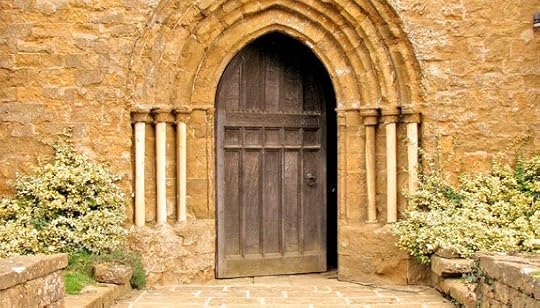
On Fifteen Years a Catholic | Carl E. Olson | Editorial | Catholic World Report
Two issues then and two surprises later
“How can you join a church that tells you how to think?”
The question, uttered with equal parts puzzlement and anger, surprised me. In hindsight, it should have been about as surprising as an afternoon drizzle here in Eugene, Oregon, in early spring. The question—almost an accusation, really—was made one early spring day over fifteen years ago. It was said in the middle of an intense discussion about the reasons why my wife and I had, both graduates of Evangelical Bible colleges, had decided to become Catholic.
I’m happy to note, all these years later, that I have a good and healthy relationship with the man who made the remark. We both uttered strong words that day, but time and some further conversations—more calm and measured in nature—have brought peace, if not perfect understanding.
I’ve sometimes joked, in recounting the full story to close friends, that I came up with the perfect retort several hours later: “At least I’m entering a Church that knows what the word ‘think’ means!” It would have been a low blow, but it touches on two issues that continue to resonate with me, now fifteen years a Catholic, nearly every day in some way or another.
The Mindless Scandal
The first is the intellectual life. The Fundamentalism of my youth was, in sum, anti-intellectual; it looked with caution, even fearful disdain, on certain aspects of modern science, technology, and academic study. But it wasn’t because we were Luddites or held a principled position against electricity, computers, or space exploration. The concern was essentially spiritual in nature; the guiding concern was that televisions, radios, “boom boxes” (remember?), and movies were potential tools for conveying messages—often subliminal in nature—contrary to a godly, Christian life. The general instinct was, in fact, actually sound. Only the creators of “Jersey Shore” can deny the power and influence of popular culture, and then only with a smirk. But the permeating fear was rarely controlled, critiqued, and concentrated through rigorous thought and study. It was reactionary and highly subjective, and so it became a sort of rogue agent, undermining the most innocent activities: reading the Chronicles of Narnia, listening to any “non-Christian” music, or studying art or literature not including any overt references to “Jesus” and “the Gospel”.
April 22, 2012
"One person who knows Pope Benedict well is Father Joseph Fessio..."
... a former theology student of Josef Ratzinger when he taught at the university of Regensburg in Germany. Father Fessio is now the editor of Ignatius Press that has published the English translation of almost all of Josef Ratzinger's books.
Asked about the personality of the Pope, Father Fessio says "he was a wonderful teacher, very kind, very intelligent... with an ironic sense of humour... .we all loved him." Father Fessio also has high words of praise for the Pope's skills as a theologian: He's not simply "one of history's great theologians, he's really a creative and original theologian"... somebody who "always finds a new insight, a new idea that will inspire you." When it comes to the main priorities of the Pope, Father Fessio says that the theme of new evangelisation, especially for Europe, "is a key motive of his papacy and that's why he took the name Benedict."
That is the introduction to this April 18th Vatican Radio audio interview with Fr. Fessio and John Allen, Jr., in which the two men discuss the seventh anniversary of Pope Benedict XVI's pontificate. For more about books by Joseph Ratzinger/Benedict XVI published by Ignatius Press, visit Ignatius Insight or this dedicated site.
Carl E. Olson's Blog
- Carl E. Olson's profile
- 20 followers


